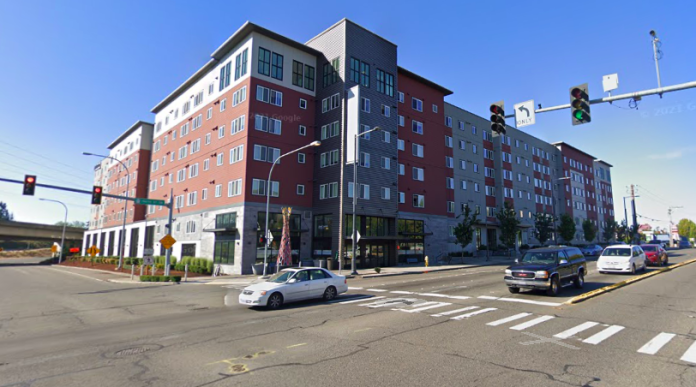
On Monday night, the Lynnwood City Council voted to continue permitting new housing units and office space in its City Center neighborhood, immediately adjacent to the coming Sound Transit light rail station, under a streamlined environmental review. The vote represents an endorsement of the city’s longstanding plan for dense mixed use housing in the neighborhood and a repudiation of several councilmembers who had been intending to send a reactionary message about adding new housing in Lynnwood.
In 2012, the City of Lynnwood approved an action ordinance that streamlined approval up to 3,000 units of housing and 4 million square feet of office space. Residential and office developments within the neighborhood boundaries weren’t required to conduct their own individual environmental review that was subject to appeal. A decade later, the neighborhood is actually exceeding those housing units by a few hundred — any new residential building permits are now falling outside the coverage of the ordinance and slowing them down. The 2012 ordinance also imposed a total cap on development in City Center at 9.1 million square feet, a cap that the current Lynnwood city attorney’s office doesn’t believe is on solid legal footing given the zoning in place in the neighborhood, the council was told.
By a 5-2 vote, the city council increased that to 6,000 residential units, bumped up the amount of office space included to 4.25 million square feet, added a new category for hotel space, and removed the overall cap on development. This paves the way for the 250 acre area to continue to densify in advance of light rail’s arrival in the city, now postponed to late 2024.
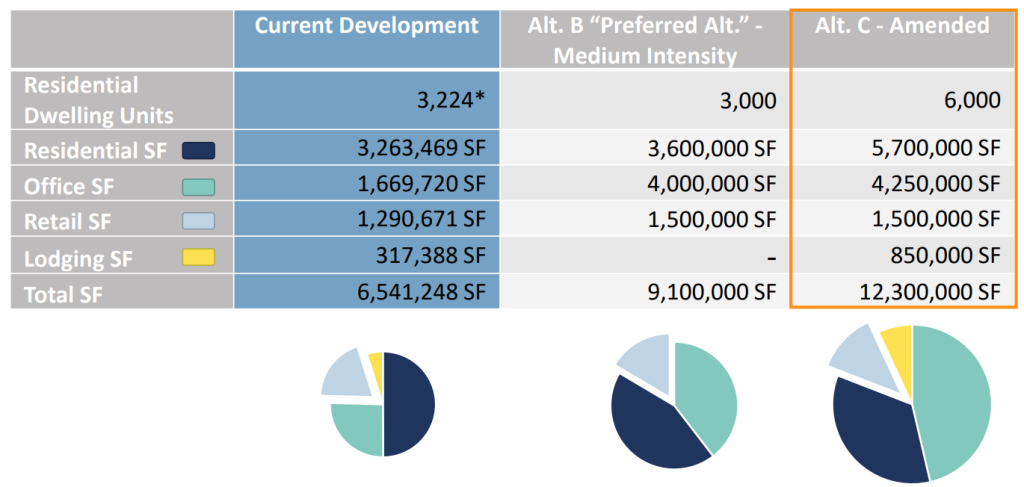
When this proposal first came before the council back in April, it was not at all clear that the proposal had the support of a majority of the body. But it also wasn’t clear that all councilmembers understood what was being proposed. It looks like the information provided by city staff in the intervening months, as evidenced through memos sent to them, was enough to convince enough members. That communication frames a “yes” vote as consistent with past planning work the city has been doing for decades.
“With development in this area, Lynnwood Link light rail opening in 2024, and Everett Link Extension being planned, the transformational development first envisioned 30 years ago is occurring as the community envisioned,” a July 27 memo to council noted. “It takes time to develop an attractive downtown and build the infrastructure to support it,” it states, targeting councilmembers who have been complaining that City Center doesn’t feel enough like a complete neighborhood yet.
Two councilmembers were unconvinced. Councilmember Jim Smith, who is in his second stint on the council after serving in the role in the 90’s and who is currently facing allegations of discrimination, said that approving the ordinance would be “disastrous for the city of Lynnwood.”
“The only people that would benefit on this are the developers that would come in, they would make millions of dollars, they would leave, after they build these apartments, and then we’re stuck with the additional traffic,” he said. “We need to be looking at the livability of the citizens of Lynnwood,” Smith said.
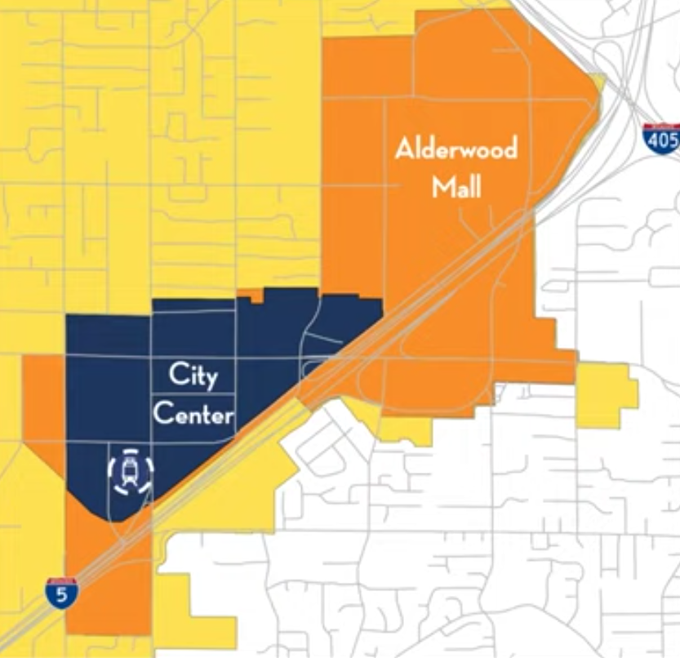
Councilmember Patrick Decker, joining Smith, focused on the potential impact of traffic from new residents as a reason to vote no. “I’m not buying that because of its proximity to the transit center that nobody’s going to buy a car. I’m not buying that nobody’s going to jump in their car to drive to the [Alderwood] mall. This is Washington, it rains — a lot. It’s a huge deterrent to people walking distances to get where they’re going,” he said.
On the side of additional growth in City Center was Councilmember Josh Binda, one of a number of councilmembers first elected in 2021. “With the growth that we expect to happen in the city of Lynnwood, with the light rail and everything coming here in our city, I think that’s going to be very expected to have that many people wanting to come to the city of Lynnwood. It’s going to be very vibrant, it’s going to be an exciting city,” Binda said. “And I think this is just preparing for what we expect to come to the city of Lynnwood, which is going to be a lot of growth.”
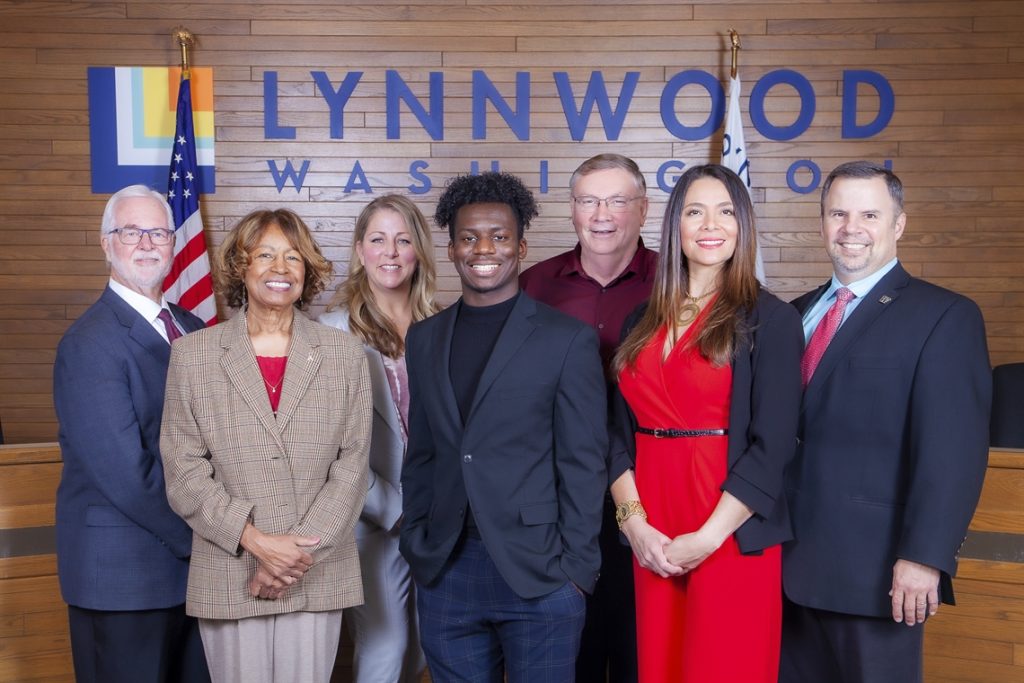
Council President George Hurst, meanwhile, has been connecting the ordinance the city council approved this week back to planning work dating to the late 1990s. “This is something that has been in planning for over 30 years,” Hurst said. “I know we talk about perhaps some of the challenges that will occur if we increase our population, but you know what…I’m excited for the new residents that are going to come into Lynnwood.”
Hurst, along with Councilmember Shannon Sessions, framed the purpose of the ordinance as also leading to the “preservation” of Lynnwood’s single family neighborhood, a majority of the city by land area. “By designating this area for density, like it has been planned for up to 30 years, will help protect our other neighborhoods, and I truly believe that,” Sessions said.
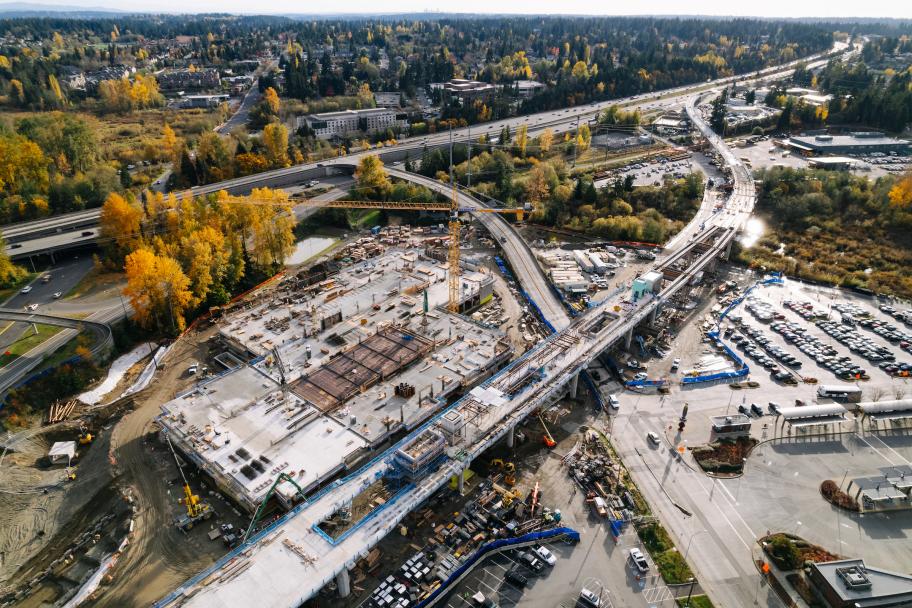
Traffic in Lynnwood may continue to be a problem, with or without this approved ordinance, as the Lynnwood City Council continues to focus on expanding road capacity in the city rather than on making the area around the planned light rail station more inviting to people on foot or bike. The newly adopted Lynnwood Complete Streets ordinance includes limited plans for improving multimodal access within the city, and the city’s resources are focused on projects like the widening of 196th, one of the major east-west streets, and a new overpass for vehicles over I-5 at Poplar Way where walking and biking space are an afterthought. Rather than utilize American Rescue Plan Act funds for curb ramps or safe routes to school projects, as they had considered, the council instead voted to focus the funds on repaving streets far from light rail.
Of course, saying no to development close to a Sound Transit light rail station wouldn’t have improved access for anyone. The reasons that the majority of the Lynnwood City Council decided to approve the update to the City Center action ordinance were clearly varied, but there was broad agreement that continuing to add housing here is in the broad interest of the city and the region.
Ryan Packer has been writing for The Urbanist since 2015, and currently reports full-time as Contributing Editor. Their beats are transportation, land use, public space, traffic safety, and obscure community meetings. Packer has also reported for other regional outlets including BikePortland, Seattle Met, and PubliCola. They live in the Capitol Hill neighborhood of Seattle.

